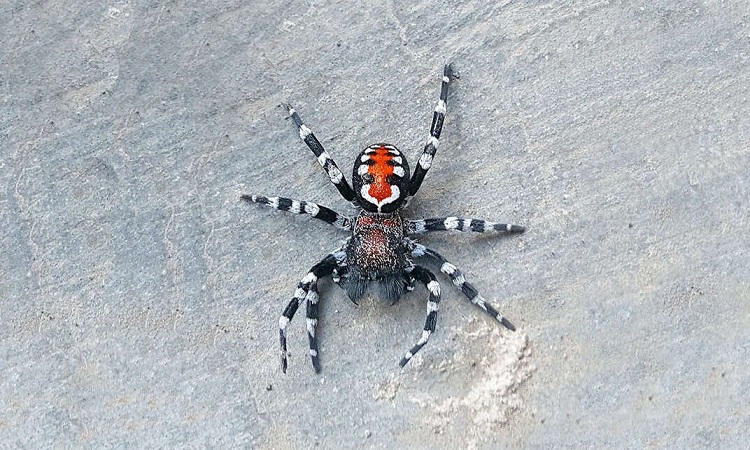A study details the discovery in Iran of a new species of spider with a red and white pattern on its back. The researchers, seeing the smile of the “Joker”, just named it after Joaquin Phoenix, who played the character in the cinema.
Putting his green hair aside, the Joker, DC Comics’ iconic villain and Batman’s worst enemy, has a white-skinned face with a broad smile on his face and scarlet lips. A physical transformation due, in the vast majority of comics, to his fall into an acid vat in the episode Batman: The Killing Joke, by Alan Moore.
So it’s this famous character who inspired biologists a few weeks ago. They have indeed identified a whole new species of spider with a red and white pattern on the back and evoking, according to them, the “smile of the Joker”.
She was just named Loureedia phoenixi after American actor Joaquin Phoenix, who plays the character in the movie Joker (2019). A role which, as we recall, earned him an Oscar.
8 millimeters long
As its name suggests, Loureedia phoenixi belongs to the genus Loureedia, of the family Eresidae. It is only the fourth species of this genus described, and the first identified outside the Mediterranean region, researchers report in the journal Arthropoda Selecta.
Like all spiders in the Eresidae family, Loureedia phoenix, which is only 8 millimeters long, is covered with small hairs. This is also the reason why these arachnids are also called “velvet spiders”.
“The latter are particularly interesting to study because some have unusual behaviors. Such as cooperating to build communal nests, or taking care of their young collectively, “said Alireza Zamani, an arachnologist at the University of Turku in Finland, and co-author of the study.
Very discreet spiders
Studying the spiders of this family, which meet in Eurasia, Africa, and Brazil is a real challenge because arachnids are only active above the ground for three weeks each year.
“These spiders spend most of their lives in their underground nests,” continues the researcher. They are only visible from late October to mid-November when the males leave their burrows to track down the females.
For the time being, the researchers explain that they have only identified male specimens. Nevertheless, they intend to continue their efforts to try to identify a few females.
“Ideally, if you have enough time and patience, it would be interesting to follow a stray male. After all, he should know how to find the female better than anyone, says Alireza Zamani. In this way, you would then be able to observe their mating behaviors, which have not yet been documented for any species of Loureedia “.




